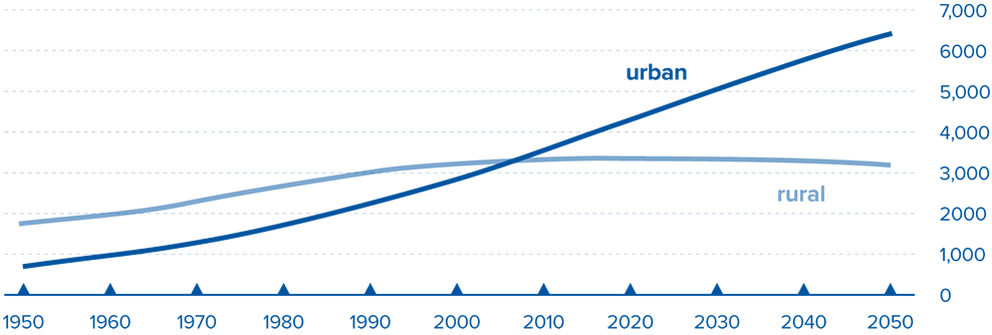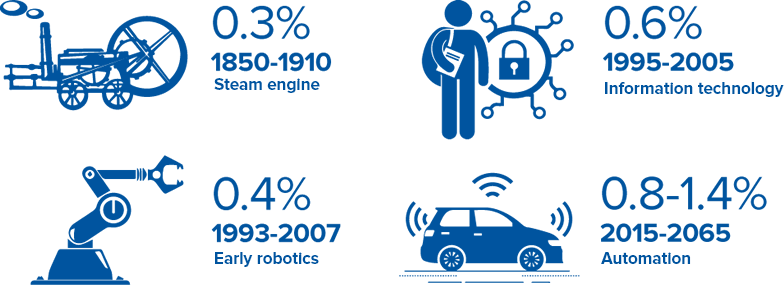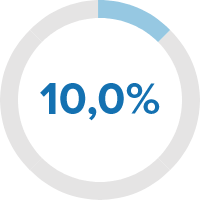
Eight trends. One portfolio
Invest in global Megatrends through a single diversified portfolio.
Seize global MegaTrend opportunities
The digital economy. Urban expansion. The depletion of natural resources. These are some of the trends that reflect our changing way of life. These and other Megatrends provide an investment opportunity focussed on long-term global trends.
EIGHT GLOBAL TRENDS *
ONE SINGLE INVESTMENT
| Smart cities | 25% | |
| Ageing population | 17.5% | |
| Fintech | 17.5% | |
| Water | 10% | |
| Climate and environmental changes | 10% | |
| Oncology | 7.5% | |
| Drones | 7.5% | |
| Self-driven electric vehicles | 5% |

Invest now on

FAM MegaTrends takes advantage of the opportunities of 8 major world trends, through a single diversified portfolio actively managed by Fineco Asset Management.
Invest now on FAM Megatrends

With just one product you can invest in eight trends that are changing the world.

You can invest in the future with a minimum subscription of £100.

The Funds are selected methodically by a dedicated management team.
Global megatrends
FAM Megatrends' portfolio looks at funds that exploit four large, interconnected world Megatrends. Read all about it in our brochure.
1/4 - Demographics
US Population
(Millions)
United Nations (UN) reports(1) predict the world's population will increase by more than 1 billion by 2030. This unprecedented growth is not evenly distributed geographically or generationally. The world's population is ageing, due to advances in medicine and technology. Millennials are also increasingly influencing consumption, spending and employment models. Geographically, the incremental effect is noticeable in both developed and developing countries, but the trend is more evident on the Asian continent. In fact, there are more people over 65 in Asia than the entire population in United States of America, and it’s expected that in the next 25 years there will be more people over 65 in Asia than people in the Eurozone and North America combined.

2/4 - Sustainability
Yearly CO2 concentration
According to NASA, global temperatures have increased by 1.9°F since 1880. Plus, 18 of the 19 hottest years ever recorded have occurred since 2001.(2) Satellite data clearly show a shrinkage of the polar ice caps, with a consequent rise in sea levels at a speed of more than 3 mm per year. At the same time, carbon dioxide levels in the air are at their highest in over 650,000 years, largely due to agriculture, deforestation and the use of fossil fuels. These alarming effects are likely to be exacerbated by the growing global population unless more efficient fuels, materials and processes are identified to help reduce humans' impact on the planet.
Source: climate.nasa.gov

3/4 - Urbanisation
In 1990, there were only 10 so-called "megalopolises" on the planet with a population of 10 million. Today, the number of mega-cities in the world has almost tripled, to 28. In fact, in 1950 30% of the world's population lived in urban areas, but this percentage is expected to increase to 66% by 2050. With such huge population growth, cities must adapt to different demands of their residents.
Source: esa.un.org/unpd/wup/Publications/Files/WUP2014-Highlights.pdf
Global urban and rural population (1950-2050)
Population (millions)

4/4 - Technology & Innovation
Technological developments are improving productivity at rates never seen before. Innovations in robotics, artificial intelligence and communication technologies are driving radical change in traditional industries like retail, manufacturing, agriculture, transport, medicine and finance. The pace of this change is exponential, and when machines capable of learning faster than humans are developed there will be disruptive effects. It’s predicted that 60% of all professions could see 30% or more of their main activities automated. (3) This process of automation will inevitably lead to the replacement of jobs with machines, but it also boosts potential for industry and the creation of new professions. Automation and process efficiency will have the positive effect of concurrently reducing costs and improving available products, benefiting standards of living. The internet of things is becoming more popular in the modern world: coffee machines, refrigerators, lighting, heating and even doorbells can be controlled via tablets and smartphones. The data available to Gartner estimates that in 2016 there were 6 billion "things" connected to the Internet. By 2020 this number will rise to over 20 billion.
Source: esa.un.org/wup
Increased productivity due to technological development

There is no guarantee of a positive return or repayment of the initial capital.
















